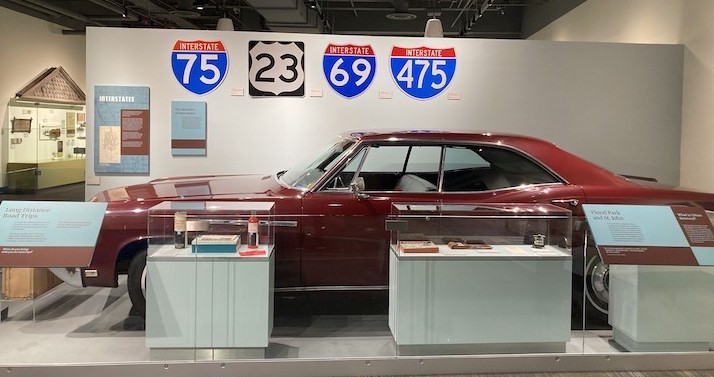
I first visited the Sloan Museum in Flint, Michigan a number of years ago. I remember the Sloan Panorama of Transportation as a pretty typical car museum – over 100 vehicles in a voluminous space with placards describing each car. That original Sloan Museum building, built in 1966, closed in 2018 for a major overhaul and expansion. After a 5 year hiatus and $30 million renovation, the newly imagined Sloan Museum of Discovery re-opened to the public in July 2022.
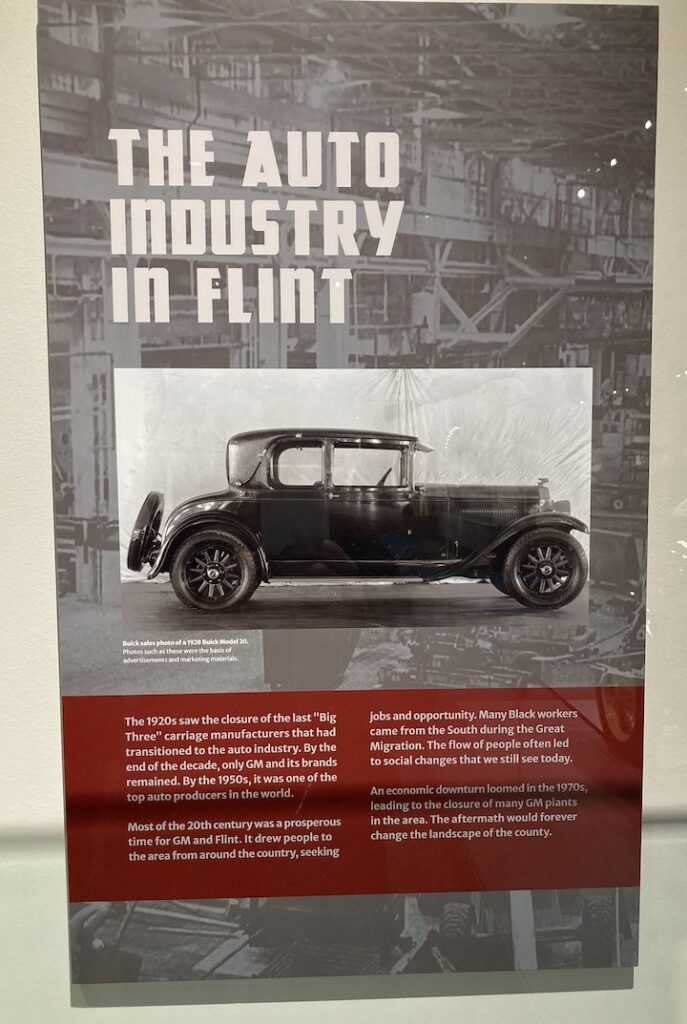
The transformation of the Sloan Museum is not in name only; rather, it embraces a totally new, different, and exciting concept. The old museum was geared toward the car enthusiast – individuals interested in the automobile itself rather than how cars related to the culture. In the new museum, cars are not the focus but rather take a supporting role. As the museum is primarily geared toward children [it was packed with kids during my visit], the automobile is called upon primarily as an educational tool. The automobile is intertwined with Flint’s history, which is reflected in the interactive exhibits in the History Gallery. While the automobile does not take center stage, the influence of the automotive industry is evident in stories about Flint life, employment, neighborhoods, schools, housing, and tourism. The History Gallery leads into the Durant Vehicle Gallery, which offers rotating exhibits about the history and future of the automobile. In this large space, the roughly 30 cars are on display not as examples in their own right, but as representative of automotive innovations that impacted people’s lives, including the automatic transmission, safety features, brakes, tires, comfort, and style.

Unlike its former incarnation, the Sloan Museum of Discovery is not all about cars; rather, the two auto-themed galleries are only part of a larger space which includes four hands-on learning galleries and exhibition hall geared toward young children. One of the galleries included a simulated car repair shop which welcomed kids to try their hands at automotive mechanics. I was pleased to see a young girl in a hard hat and safety vest working diligently under the hood.
The visit to the Sloan Museum of Discovery was undertaken as part of my current project to examine how women are represented in automotive museums. While women were not prominent in the museum exhibits, they were present in small but important ways.
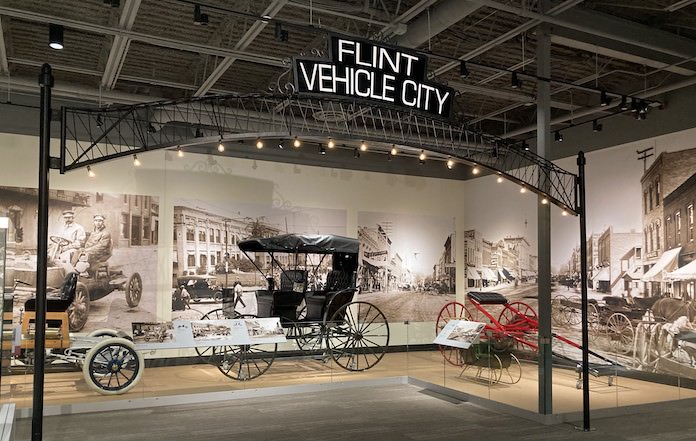
The ‘Dunning Carriage to Cars Exhibit’, part of the History Gallery, is funded by the Margaret Dunning Foundation. The signage accompanying the exhibit reads: ‘Dunning was a successful businesswoman known for her love of classic cars. She established the foundation in her name in 1997. It nurtures the preservation and teaching of automotive history and other charitable interests in Michigan.’ Dunning was a philanthropist, history buff, classic car enthusiast, and huge proponent of automotive education. Her foundation not only funded the exhibit in Flint, but also programs in automotive technology and auto design in various schools throughout the state. Her contributions to the Sloan are in tandem with the museum’s mission to serve as an educational experience and resource for residents of Genesee county and other Sloan visitors.
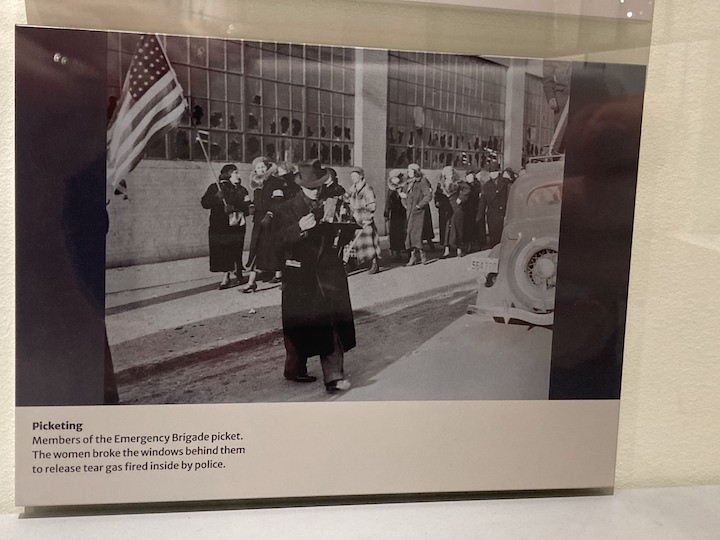
Other references to women include their important role as members of the Emergency Brigade during the 1936 General Motors Sit-Down Strike. As noted in Jalopnik, “Many think of factory work, and therefore a strike in the automotive industry, as something primarily men would do. But it was the members of the Women’s Emergency Brigade, a paramilitary group of women inside the United Auto Workers union, who proved to be the secret weapon in that group’s triumph over General Motors.” Women are also included in exhibits focused on safety – in the car and on the factory floor.
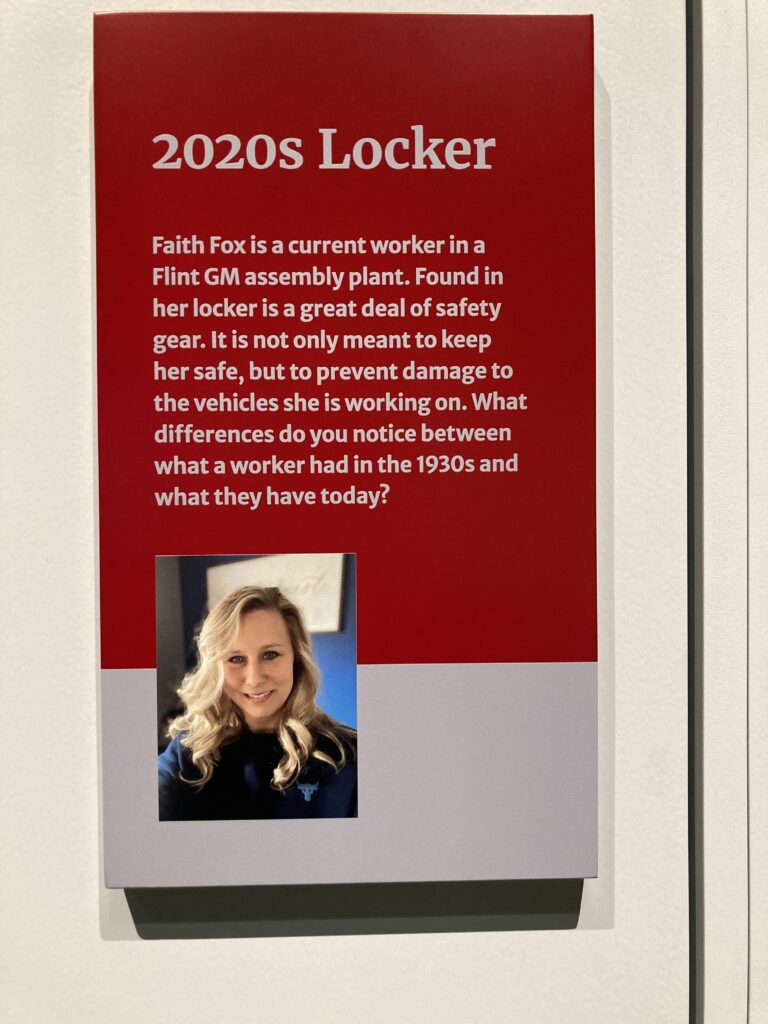
The museum does not shy away from the auto industry’s negative impacts on the city of Flint. An underlying theme in the History Gallery involves the automobile’s affect on race relations through the displacement of black Flint residents via expansion, highway construction, and eventual loss of industry to the area.
While my intention in visiting the Sloan was to examine how women were represented, I came away impressed with how the museum endeavors to serve as a source of automotive education of all who visit, regardless of age, race, or gender.